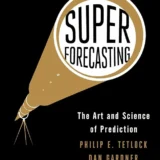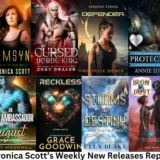A synopsis is a larger version of the book jacket blurb you see on the back of most paperbacks in the bookstore. You write a synopsis for the same reason: to sell a story idea to a publisher and ultimately to a reader. It is an in-depth summary of the entire book that weaves in thematic elements with plot to portray a compelling often multi-level story arc. Although a well-written synopsis may be the hardest thing to write—particularly for a novice writer and you haven’t finished your book—it is precisely what an editor or agent usually wants to see first of your work (often alongside sample chapters and a query letter).
Why Write a Synopsis?
The synopsis is a highly valuable tool to writers for a number of reasons.
1. A synopsis helps get your manuscript read by an editor. Writing a great synopsis is just as important as writing a compelling first three chapters to hook an editor. Editors most often ask for a combination of these three things in an initial submission: 1) query letter; 2) sample chapters (usually three); and, 3) synopsis. However, publishers’ specifications for synopses vary greatly. For instance, the length of a synopsis may vary from one page to twenty pages and its style will vary accordingly. Whether you submit a synopsis with your novel sample chapters or not, writing one will directly benefit your novel by helping you to sort out what’s important and what drives the theme and characters of your story.
2. The synopsis can answer questions that may perplex the author, stuck on a scene or plot item. It helps you weave your novel’s elements into a well-integrated story that is compelling at many levels. Let’s face it; if you can’t tell describe what the book is about, what’s important and what drives the story you may have to re-evaluate the story. Certainly don’t expect an editor to know if you don’t. For this reason, it makes sense to write drafts of your synopsis as you go along in the novel; that way it’s useful to both you and to the editor and then it’s more or less written when you need to submit it along with sample chapters…and not quite as daunting a task either.
3. The synopsis you write for your novel may be used by the publisher’s marketing department to advertize your book and by their cover artists on your cover. Therefore, it’s important to make the tone, flavor and intent of your story clear in your synopsis so that it’s properly represented.
What is a Synopsis?
It helps to know what a synopsis is before embarking on one. Unlike an outline, which is basically a plot summary, a synopsis integrates plot with theme and characterization so a publisher can gauge the meaningfulness of the story. A synopsis can contain the following items: 1) theme; 2) setting and period; 3) plot summary; 4) character sketches; 5) dialogue; 6) emotional turning points; and 7) subplots. The synopsis combines these components to reveal the story’s unique nature and what makes it stand out to both publisher and ultimately reader.
Writing a Synopsis
Theme is the backbone of the novel, the “so what” part. If you are able to reduce it to one sentence or even word, this will help you to focus the other aspects of the synopsis, and novel, around it. For example, “there’s no place like home,” or “to have a friend, you must be a friend.” You can provide setting and period in one or two short sentences, while describing other key elements to your story. Plot summaries provide the skeleton upon which you flesh out characters and their motivations, they form the “what” of the “so what” part. The actual “so what” parts are the emotional turning points or the focal events of the plot that directly link to important thematic parts of the story. Character sketches get woven in as part of theme and plot. Dialogue or quotes (very short excerpts) can be effective. They break up the page and makes it more interesting, while providing a sample of your work.
If this all still sounds daunting to you, think of writing the synopsis in steps:
Step 1: write the outline, using each chapter to write a one or two sentence summary of important points.
Step 2: create a thematic skeleton, by adding the motivational aspects of the plot with the various characters and what’s at stake for each of them. Think of the overarching thema or story arc and include important sub-plots that tie-in to this.
Step 3:flesh out the storytelling by writing it as a story. Use all your fiction writing skills to create a compelling story summary.
Write your synopsis like a story, complete with hook, building a crisis and then climax
and denouement.
Some Basic Rules
Despite the varying specific guidelines among publishing houses, they agree on several universal rules that every synopsis should follow. These include:
Summarize the complete novel (beginning, middle, and end) regardless of whether you’ve included sample chapters and don’t leave out the ending (as a teaser);
Always write the synopsis in the present tense (e.g., the Budong eats Jarek; not the Budong ate Jarek)
Write the synopsis from the author’s perspective and use vivid language (e.g., use active power verbs and avoid modifiers)
The first time you introduce a character in a synopsis, type the name in CAPITAL letters, but do this only the first time the character is mentioned.
Stay consistent with how you describe a character (e.g., not John the first time and Mr. Smith the next)
Remember to check the guidelines of the publishing house to which you are submitting before finalizing your synopsis and the rest of your submission. Every house will be a little different.










Good subject and good info. Thanks.
You’re welcome, JJ!
Best Wishes,
Nina